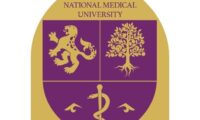Received: 06.05.2024/ Accepted: 18.12.2024/ Published online: 30.12.2024
УДК 616.36-003.826-084
DOI: 10.53511/pharmkaz.2025.16.55.008
Ye.Sh. Bazargaliyev1, A.M.Madenbayeva1, Kh.I.Kudabayeva1, S.S.Rysmaganbetov1
1West Kazakhstan Marat Ospanov Medical University,
Aktobe, Kazakhstan
NON-ALCOHOLIC FATTY LIVER DISEASE AND ITS RELATIONSHIP WITH METABOLIC SYNDROME: MODERN
APPROACHES TO TREATMENT AND PREVENTION
Introduction. Non-alcoholic fatty liver disease (NAFLD) and metabolic syndrome (MetS) are increasingly recognized as
major public health concerns due to their high global prevalence and association with severe long-term health outcomes,
including cardiovascular diseases, type 2 diabetes, and liver-related complications. This article explores the relationship
between NAFLD and MetS, emphasizing their interconnected pathophysiology, clinical manifestations, and modern
approaches to treatment and prevention. The purpose of the study is to review the latest literature on NAFLD and MetS,
focusing on the mechanisms linking these conditions, diagnostic criteria, and therapeutic strategies.
Methods. A comprehensive review of relevant literature was conducted using databases such as PubMed, Scopus, Web of
Science, and Google Scholar. We focused on publications from the last five years, selecting studies based on their relevance to
NAFLD, MetS, pathophysiology, diagnostic approaches, and treatment strategies. A total of 80 articles, including metaanalyses, clinical trials, and systematic reviews, were included in the analysis. Inclusion criteria: evidence-based studies,
clinical trials, systematic reviews, and meta-analyses. Exclusion criteria: expert opinions, editorial articles, and non-peerreviewed sources.
Results. NAFLD encompasses a spectrum ranging from simple hepatic steatosis to non-alcoholic steatohepatitis (NASH),
fibrosis, and ultimately cirrhosis. MetS is characterized by a cluster of risk factors that contribute to the development of
cardiovascular diseases and type 2 diabetes. The two conditions share common risk factors such as insulin resistance, central
obesity, and inflammation. Lifestyle modifications, including dietary changes and increased physical activity, remain the
cornerstone of treatment. Pharmacological therapies, including pioglitazone, GLP-1 receptor agonists, and emerging drugs
targeting fibrosis, offer additional therapeutic options. Bariatric surgery has shown promise in treating advanced stages of
both NAFLD and MetS.
Conclusion. This review underscores the critical need for early diagnosis, lifestyle interventions, and a multidisciplinary
approach to the management of NAFLD and MetS. Further research into the molecular mechanisms and long-term outcomes
of treatment options will be crucial in improving patient care and reducing the global burden of these conditions.
Keywords: non-alcoholic fatty liver disease (NAFLD), metabolic syndrome (MetS), fatty liver, insulin resistance, metabolic
diseases, obesity, pharmacotherapy, treatment strategies.
О ЖУРНАЛЕ
НАУЧНЫЙ ИНФОРМАЦИОННО-АНАЛИТИЧЕСКИЙ ЖУРНАЛ
«ФАРМАЦИЯ КАЗАХСТАНА»
Издание для работников органов управления здравоохранением, в том числе фармацией, фармакологов, клинических фармакологов для врачей, провизоров, фармацевтов и широкого круга специалистов, работающих в сфере обращения лекарственных средств, изделий медицинского назначения и медицинской техники, сотрудников медицинских вузов и колледжей, для работников и организаторов практического здравоохранения.
Основная тематика:
- законы и нормативные правовые документы, регламентирующие сферу обращения лекарственных средств и медицинских изделий;
- актуальная информация о лицензировании, регистрации, сертификации и стандартизации лекарственных средств, оперативные материалы Комитета контроля медицинской и фармацевтической деятельности МЗСР РК - Комитет медицинского и фармацевтического контроля Министерства здравоохранения Республики Казахстан
- анализ фармацевтического рынка Республики и стран СНГ, тенденций и проблем его развития;
- новости медицины и фармации, клинической фармакологии, поиск, исследования и эксперименты в области разработки и создания новых эффективных медицинских препаратов, в том числе отечественного производства;
- мнение специалистов и экспертов о лекарственных препаратах и медицинских изделиях, поступающих на рынок Казахстана, презентация фармацевтических и медицинских компаний и их продукции, а также широкое освещение практической деятельности аптечных организаций, организаций здравоохранения, медицинских учреждений;
- освещение деятельности медицинских и фармацевтических учебных заведений Республики Казахстан, дальнего и ближнего зарубежья;
- публикация материалов, освещающих деятельность и опыт применения ЛС и медицинских изделий практикующих врачей;
- освещение деятельности организаций общественного здравоохранения, фармацевтических и медицинских компаний, занимающихся выпуском и продажей лекарственных средств и медицинских изделий;
- публикация материалов по апробации инновационных технологий, ЛС и МИ перед получением патента;
- результаты доклинических и клинических исследований ЛС и МИ.
- публикация информации о врачах, ученых, сотрудников медицинских и фармацевтических организаций к юбилейным датам.
Журнал входит в Перечень изданий, рекомендуемых Комитетом по контролю в сфере образования и науки Министерства образования и науки Республики Казахстан для публикации результатов научной деятельности
Каждый журнал имеет свои требования по оформлению статьи. Требования вы можете найти на сайтах вышеуказанных журналов.
Сотрудники редакции и редакционная коллегия журнала «Фармация Казахстана» (далее – журнал) опирается в своей работе на принятые международным сообществом принципы публикационной этики: Кодекс публикационной этики (Committee on Publication Ethics), статьи 971-984 ГК РК Конституции Республики Казахстан, Закон Республики Казахстан «Об авторском праве и смежных правах», главу 3 Закона РК «О науке», а также учитывают опыт авторитетных международных журналов и издательств.
Во избежание недобросовестной практики в публикационной деятельности (плагиат, изложение недостоверных сведений и прочее) каждый член редакции, редакционной коллегии, автор и рецензент обязаны соблюдать этические нормы и правила, а также принимать меры для предотвращения их нарушений. При обнаружении в процессе рассматривания работ недостоверных сведений, плагиата, повторов ранее опубликованных работ, их переводы и прочего статья снимается с опубликования. Соблюдение правил этики научных публикаций способствует обеспечению прав авторов на интеллектуальную собственность, повышению качества публикации и исключению неправомерного использования авторских материалов в интересах отдельных лиц.
Основные термины, используемые в данном положении
Этика научных публикаций – система норм профессионального поведения во взаимоотношениях авторов, рецензентов, редакторов, издателей и читателей в процессе создания, распространения и использования научных публикаций.
Редактор — представитель научного журнала или издательства, осуществляющий подготовку материалов для публикации, а также поддерживающий общение с авторами и читателями научных публикаций.
Автор – лицо или группа лиц (коллектив авторов), участвующих в создании публикации результатов научного исследования.
Рецензент – эксперт, действующий от имени научного журнала или издательства и проводящий научную экспертизу авторских материалов с целью определения возможности их публикации.
Издатель – юридическое или физическое лицо, осуществляющие выпуск в свет научной публикации.
Читатель – любое лицо, ознакомившееся с опубликованными материалами.
Редакционная коллегия – совещательный орган из группы авторитетных лиц, который оказывает редакции помощь в выборе, подготовке и оценке произведений для издания.
Рукопись – поданное для опубликования в редакцию авторское произведение, но не опубликованное.
Научная статья – законченное и опубликованное авторское произведение.
Плагиат – умышленное присвоение авторства чужого произведения науки или искусства, чужих идей или изобретений. Плагиат может быть нарушением авторско-правового законодательства и патентного законодательства и в качестве такового может повлечь за собой юридическую ответственность.
- Этические принципы, которыми должен руководствоваться автор научной публикации
Представление статьи на рассмотрение в редколлегию журнала подразумевает, что она содержит полученные автором (коллективом авторов) новые научные результаты, ранее нигде не публикованные.
Авторы должны осознавать, что несут персональную ответственность за предоставляемый текст рукописи и соблюдать следующие принципы:
2.1. Предоставлять достоверные результаты проделанной работы и объективное обсуждение исследования.
2.3. Гарантировать, что результаты исследования, изложенные в рукописи, представляют собой самостоятельную и оригинальную работу. В случае использования фрагментов чужих работ и/или заимствования утверждений других авторов, в статье должны быть библиографические ссылки с обязательным указанием автора и первоисточника. Плагиат в любых формах (неоформленные цитаты, перефразирование или присвоение прав на результаты чужих исследований) являются неэтичными и неприемлемыми действиями.
2.4 Автор обязан незамедлительно уведомить редактора при обнаружении существенной ошибки или неточности в своей опубликованной работе и оказать помощь в устранении или исправлении ошибки.
2.5 Все те, кто внес значительный вклад в написании рукописи, должны быть перечислены в качестве соавторов. Автор (первый) должен ознакомить всех соавторов с окончательным вариантом статьи, получить их одобрение и согласие с ее представлением к публикации. Все указанные в статье авторы должны нести ответственность за содержание статьи.
2.6 Предоставлять статью для рассмотрения только в журнал «Фармация Казахстана». Несоблюдение этого принципа расценивается как грубое нарушение этики публикаций и дает основание для снятия статьи с рецензирования.
- Этические принципы в деятельности рецензента
Рецензент осуществляет научную экспертизу авторских материалов. Его действия должны носить непредвзятый характер, заключающийся в соблюдении следующих принципов:
3.1. Экспертная оценка должна помогать автору улучшить качество текста статьи, а редакции – принять решение о публикации.
3.2. Рецензент не может быть членом редакционной коллегии журнала «Фармация Казахстана».
3.3. Любая рукопись, полученная на рецензирование, является конфиденциальным документом.
3.4. Рецензент должен быть объективным и выражать свое мнение четко и аргументированно.
3.5. Рецензент не должен использовать информацию и идеи из представленной ему на рецензию статьи для личной выгоды, соблюдая конфиденциальность этой информации и идей.
3.6. Рецензент не должен принимать к рассмотрению рукописи при наличии конфликта интересов, вызванных конкуренцией, сотрудничеством или другими отношениями с любыми авторами или организациями, связанными со статьей.
- Принципы профессиональной этики в деятельности редакторов и редакционной коллегии
В своей деятельности члены редакционной коллегии журнала несут ответственность за обнародование авторских произведений, что влечет необходимость следования следующим основополагающим принципам:
4.1 Редактор и сотрудники редакции должны нести ответственность за все, что публикуется в журнале.
4.2 При принятии решения о публикации редакторы журнала руководствуются достоверностью представленных данных и научной значимостью рассматриваемой работы.
4.3 Сотрудники редакции не должны иметь никакого конфликта интересов в отношении статей, которые они отклоняют или принимают.
4.4 Сотрудники редакции журнала несут ответственность за решение о том, какие из статей, присланных в журнал, будут приняты к публикации, а какие отклонены.
4.5 Сотрудники редакции не должны допускать к публикации информацию, если имеется достаточно оснований полагать, что она является плагиатом.
4.6 Сотрудники редакции и члены редакционной коллегии журнала должны обеспечивать конфиденциальность имен и другой информации, касающейся рецензентов.
- Конфиденциальность
5.1 При работе с неопубликованными материалами все члены редакционной коллегии должны соблюдать требования основополагающих документов в области защиты информации, а именно, персональные данные авторов и рецензентов.
5.2 Поданная на экспертизу рукопись должна рассматриваться как документ, обладающий свойством конфиденциальности.
- Конфликты интересов
6.1 Редакторы и редакционная коллегия обязана запрашивать от авторов рукописей раскрытия существующих конкурирующих интересов. Если конфликт интересов выявлен после публикации, редакционная коллегия обязана обеспечить публикацию соответствующих поправок.
6.2 В случае наличия конфликта интересов членов редакционной коллегии журнала в результате конкурентных отношений, сотрудничества и связей с одним из авторов, рукопись передается для разрешения конфликта на рассмотрение независимому эксперту.
6.3 Рецензенты не должны принимать участие в рассмотрении и оценке рукописей в случае наличия конфликта интересов или личной заинтересованности.
6.4 При подаче этической жалобы относительно предоставленной рукописи или опубликованной статьи главный редактор должен предпринять меры, основанные на опыте авторитетных журналов. Каждое сообщение о факте неэтичного поведения должно рассматриваться без установления сроков давности. В случае подтверждения факт следует публикация соответствующих исправлений, опровержений или извинений.
ПОЛИТИКА ОТКРЫТОГО ДОСТУПА Каждый журнал обеспечивает открытый доступ к своему контенту, исходя из принципа, согласно которому обеспечение свободного доступа общественности к исследованиям способствует более широкому глобальному обмену знаниями.
Стремясь привлечь максимальную аудиторию специалистов для широкого (в том числе критического) обсуждения опубликованных статей, а также внедрения результатов научных исследований в практику отечественных фармации, фармакологии и здравоохранения, а также фармацевтического и медицинского образования, журнал следует политике полного открытого доступа к публикациям. Все содержимое журнала доступно для пользователей бесплатно на веб-сайте www.pharmkaz.kz. Пользователям разрешается читать, скачивать, копировать, распространять, распечатывать полные тексты статей журнала.
Цели и задачи журнала «Фармация Казахстана» - обобщение научных и практических достижений в области фармации, фармакологии и практического здравоохранения, повышение научной и практической квалификации работников сфер фармации и здравоохранения.
Задачи:
• Освещать новые научные результаты в области фармации, фармакологии и здравоохранения.
• Повышать открытость и доступность результатов научных работ научных, практических и педагогических работников, врачей и обучающихся в различных областях фармации и здравоохранения.
• Повышать профессиональный уровень фармацевтических, медицинских, научных и педагогических работников, публикуя оригинальные статьи, результаты фундаментальных и прикладных исследований, направленных на разработку и изучение с целью оптимизации фармацевтического кластера, развитие здравоохранения, лекции и обзоры литературы по широкому спектру вопросов фармацевтических дисциплин, а также результаты доклинических и экспериментальных фармакологических и клинических исследований.


































